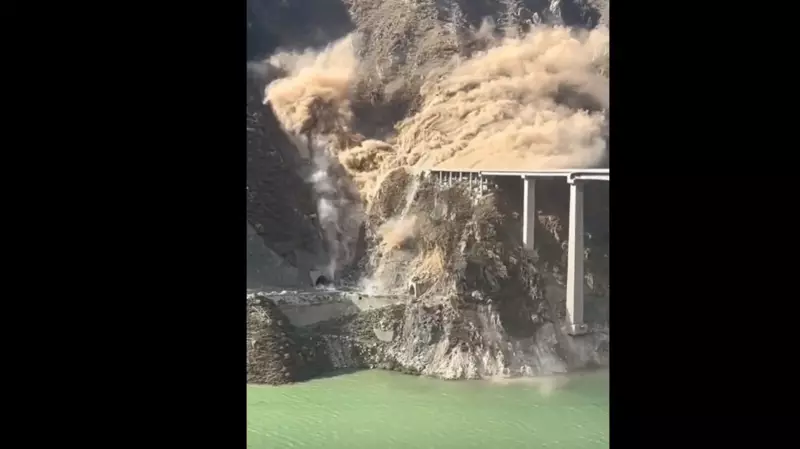
A newly constructed bridge in China's Sichuan province suffered a partial collapse on Tuesday, raising serious questions about infrastructure safety in the region. The incident occurred along a crucial national highway connecting China's heartland with the Tibet region, though fortunately no casualties have been reported.
Bridge Safety Concerns Preceded Collapse
Authorities had taken precautionary measures by closing the 758-meter bridge on Monday after detecting worrying signs of structural instability. Cracks had begun appearing in nearby roads, and concerning shifts were observed in the terrain of a nearby mountain, according to local government statements reported by Reuters.
The situation deteriorated significantly on Tuesday when the mountain's condition worsened, ultimately leading to the bridge's partial collapse. The timing is particularly alarming given that construction had only finished earlier this year, as confirmed by social media posts from the contractor accessed by Reuters.
Critical Transportation Link Disrupted
The collapsed bridge forms part of a vital transportation artery that facilitates movement between China's central regions and the remote Tibet area. This national highway serves as a crucial corridor for both commercial and civilian travel, meaning the collapse will likely disrupt significant economic and social activities in the region.
While the immediate focus remains on assessing the damage and ensuring public safety, the incident raises broader concerns about construction quality and infrastructure monitoring in challenging geological environments like Sichuan province, known for its mountainous terrain and seismic activity.
Investigation and Recovery Efforts
Authorities have not yet released detailed information about what caused the terrain shifts that preceded the collapse. The incident represents a significant infrastructure failure for a bridge that was expected to serve the region for decades.
This remains a developing story, with further updates expected as investigation teams assess the damage and determine the full scope of the collapse. The absence of casualties suggests that the early warning systems and precautionary closures implemented by authorities may have prevented a tragedy.





